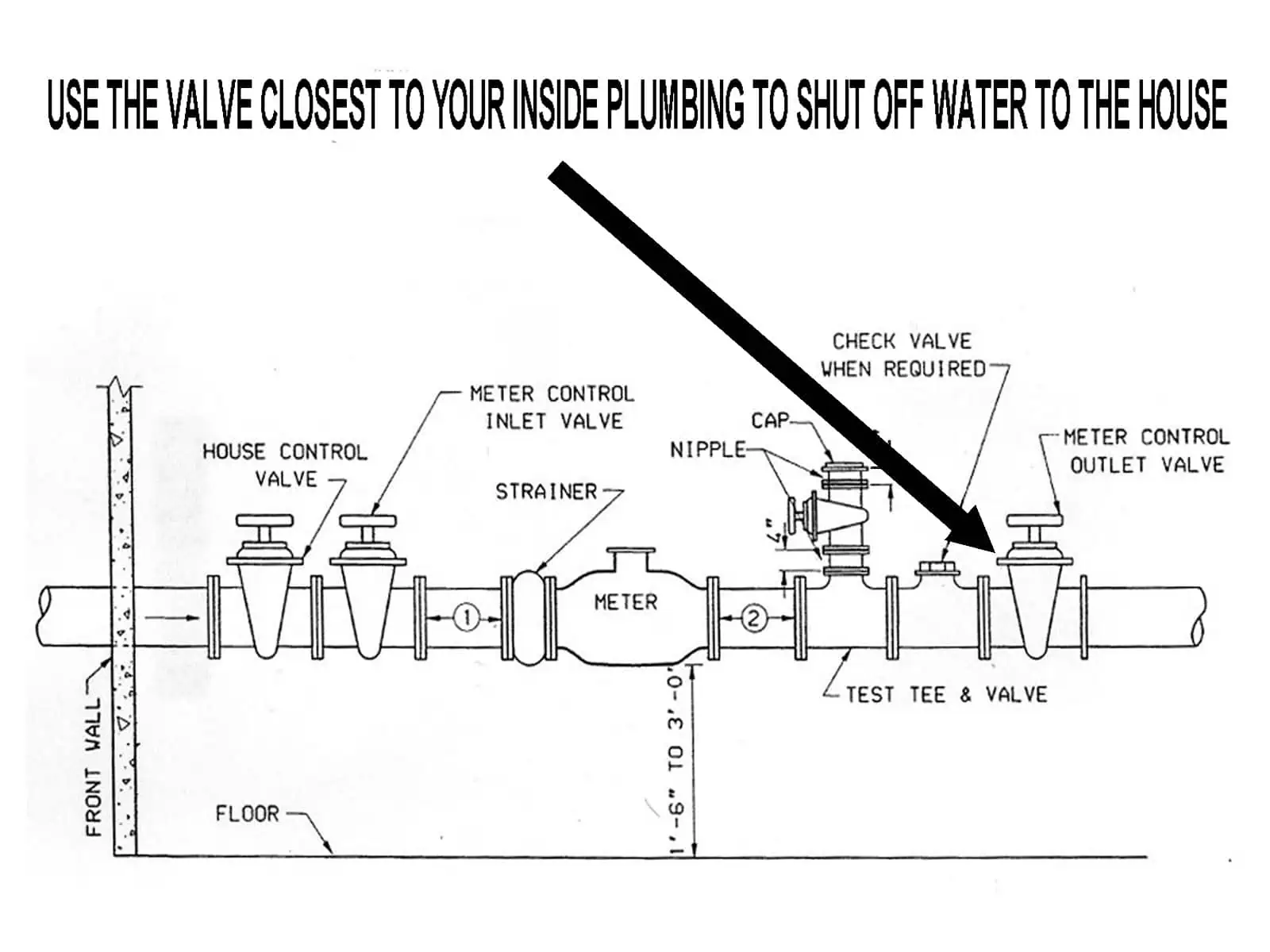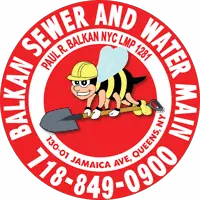If you’re a typical homeowner, understanding the location and operation of your home’s water shut off valve is crucial knowledge, even though many folks do not realize that until an emergency or a water leak occurs. When you’re dealing with a plumbing emergency or planning routine maintenance, the first questions you may ask are “Where is the water shut off valve located” and “How do I turn off the main water supply”?
Being able to swiftly and safely turn off the water supply can prevent extensive damage to your property and belongings when a leak occurs. In this guide, we’ll explore where you can typically find the water shut off valve in your house and the proper steps to shut off water without causing any harm to your plumbing system or the building. Where you water valve is located is actually governed by the rules of the DEP if you reside within NYC.
Importance of Knowing Where is the Water Shut-Off Valve in Your Home
You may think something as simple as locating your water valve is unimportant. So, before we dive into the specifics, you must understand why knowing where is the water shut off valve location is vitally important.
Water emergencies can and do happen unexpectedly, from burst pipes to malfunctioning appliances. Therefore, having quick access to your shut off valve can mitigate water damage significantly. Whether you’re dealing with flooding, leaks, or repairs, shutting off the water promptly can prevent extensive water damage, mold growth, and costly repairs.

Locating the Water Shut-Off Valve
The first step in preparing for a potential water emergency is to know where is the water shut off valve exactly located. Locating your home’s main water shut off valve after a leak or an emergency occurs can cause unnecessary damage and aggravation. While the exact location can vary depending on your home’s layout and construction, there are several common places to check:
- Basement or Crawl Space: In many homes, especially older ones, the main shut off valve is located in the basement or crawl space. Look along the inside of the foundation wall near the front of the house, where the main water line enters the building. It’s often mounted on a wall or attached to a pipe. As most homes have a water meter inside their house, look for a valve on the house side of the water meter
- Utility Room or Mechanical Closet: In newer homes or those with dedicated utility rooms, you may find a shut off valve near the water heater or other utility fixtures. If you’re just looking to shut a section of your water piping, check around the water heater, furnace, or washing machine connections. In most homes, the inside front wall would be the answer to “Where is the water shut off valve” for the entire home.
- Garage: Some homes have the shut off valve located in the garage, particularly if it’s attached to the house. Look along the walls or in an access pit near where the water line enters the garage.
- Exterior Walls: In regions where freezing temperatures are not common, the shut off valve may be located outside the house in an access pit because it is not subject to freezing. Check along exterior walls, near the foundation, or just inside or outside of the property boundary.
- Meter Box: In certain homes, especially in warmer climates, the shut off valve may be located within the meter box under the sidewalk, or just inside the property line. In many cases, there is a locking cover, and you may need a special tool or key to access it.
If you’re having trouble knowing exactly where is the water shut off valve, consult your home’s blueprint or contact a professional plumber for assistance. As stated previously, it’s crucial to familiarize yourself with its location before an emergency occurs.
Two additional good tips:
- If you locate a water pipe inside your basement, trace it towards the front of the basement. That will frequently lead you to the main water shut off valve.
- Once you locate your water shut off valve, make sure that it works, and clearly label the valve as the main valve using a brightly colored tag.
Shutting Off the Water Safely After Knowing Where Is The Water Shut Off Valve
Once you’ve located the shut off valve, it’s essential to know how to turn off a water valve properly and safely. Follow these steps to shut off the water supply to your home without causing damage to the plumbing or the building. Also, bear in mind that different types of water valves close differently.
- Turn Off Appliances: Before shutting off the main water supply, turn off any appliances (washing machines, dishwashers, etc.). This will prevent any abrupt stop or start of water flowing that damages your pipes or plumbing.
- Turn Off the Valve: Depending on the type of shut off valve you have, you may need to turn it clockwise (right) or use a lever to switch it to the “off” position by turning it 1/4 of a turn. Some valves may require a wrench or other tool to operate, while others can be turned by hand. Take care not to force the valve, as it could damage the mechanism.
- Open Faucets to Drain Remaining Water: After shutting off the main valve, open faucets at the lowest point in your home, such as basement sinks or outdoor spigots, to allow any remaining water in the pipes to drain out. Also opening a sink at a higher floor will speed up the draining process for eliminating the vacuum by letting air enter the pipes. Doing this will help prevent damage by allowing your plumbing system to drain out.
- Relieve Pressure: If you’re shutting off the water due to a leak or burst pipe, relieve any remaining pressure in the system by opening faucets throughout the house. Letting the water that remains in the pipes empty into a plumbing fixture or outside area will help minimize damage until plumbing repairs can be made.
- Monitor the Situation: Once you believe that the water supply is shut off, monitor the situation closely to ensure that you did in fact close the water, and leak has stopped. Never assume that a water valve closed the water 100%. If necessary, contact a professional plumber for assistance with plumbing repairs before your inaction makes things worse.
Regular Maintenance and Inspection
In addition to knowing how to shut off the water in your home during an emergency and where is the water shut off valve, it’s essential to perform regular maintenance and inspection of your home’s water valves in particular. Here are 5 great tips for you to keep your plumbing in good operational condition and avoid nasty surprises:
- Water Valves Need Exercise!: Just like people, water valves need exercise! Most folks don’t take the time, but all water valves need to be gently opened and closed about once a year to keep them easily operational and not frozen in place.
- Inspect Pipes and Fixtures: Routinely check for signs of leaks, corrosion, or damage to pipes, faucets, and fixtures. Address any issues promptly to prevent further damage.
- Winterize Outdoor Plumbing: In cold climates, take steps to protect outdoor faucets and pipes from freezing temperatures by insulating them or using frost-proof faucets. If a pipe does freeze, learn about how to thaw out frozen water pipes safely before you undertake the task.
- Schedule Professional Inspections: Consider scheduling annual or bi-annual inspections with a professional plumber to detect any potential issues early and ensure that your plumbing system is in good working order.
- Know Your Plumbing System: Familiarize yourself with the layout of your home’s plumbing system, including the location of shut off valves, water meters, and sewer clean-outs. This knowledge can be invaluable in an emergency.
If you take the time to take proactive measures and stay informed about the status of your home’s plumbing system, you can minimize the risk of water damage. These steps will also help ensure the safety and comfort of your household, and unnecessary water damage when a water leak occurs.
A Conclusion About Knowing Where Your Main Water Valve is Located
A little recognized and essential skill for any homeowner is knowing where is the water shut off valve, and how to shut off the water safely. If you familiarize yourself with your main water shut off valve’s location, perform regular maintenance and inspections, and follow proper procedures in an emergency, you can protect your property from water damage and ensure the integrity of your plumbing system.
If you have any questions or concerns about your home’s plumbing, it’s better to ask before an emergency occurs. Don’t hesitate to contact a professional plumber for assistance, if you reside in the NYC area, that would be Team Balkan.






